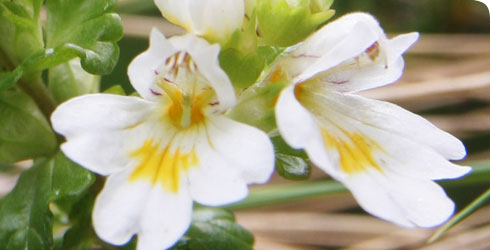Euphrasia grandiflora (Azorean eyebright)
Euphrasia grandiflora is a perennial herb that occurs only in the Azores.
The Azores are a group of 9 islands located in the middle of the Atlantic ocean.
The islands were formed as volcanoes - the oldest (Santa Maria) was formed 8 million years ago and the youngest (Pico) within the last quarter of a million years.
The Azores are very remote - 1,300km from Portugal and 1,600km from North America. They have never been connected to the continent. As a result, few plant groups have managed to colonise them.
Many groups that have colonised have gone on to evolve endemic species - species that occur on the Azores and nowhere else. Euphrasia grandiflora Hochst ex Seub is one such species.
However the pattern of speciation here differs from other oceanic island groups - this is the subject of ongoing research.
Species detail
-

Taxonomy
Euphrasia grandiflora is a short-lived herb with striking leaves and flowers. Find out what gives it its name 'grandiflora', and how it differs from its European relatives.
-

Distribution
This rare plant is found only in parts of the Azorean archipelago. It lives at the edges of volcanoes, parasitising other plants. Find out where you might spot it.
-

Conservation
Euphrasia grandiflora is one of the most threatened Azorean endemic plants. Find out what threats it faces.
Images
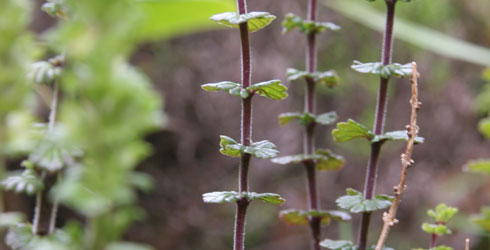
Euphrasia grandiflora on Pico island - this has smaller foliage than plants on Sao Jorge. Older bare twigs indicate the perennial nature of the plant.
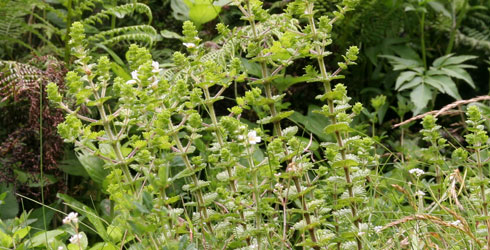
Euphrasia grandiflora on Sao Jorge.

Euphrasia grandiflora on Sao Jorge.
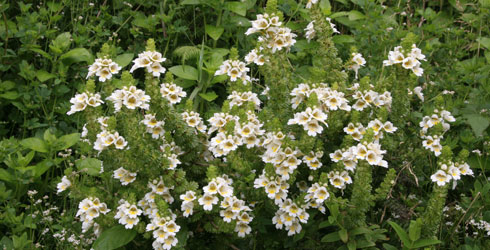
Euphrasia grandiflora on Sao Jorge.

Euphrasia grandiflora on Pico island.
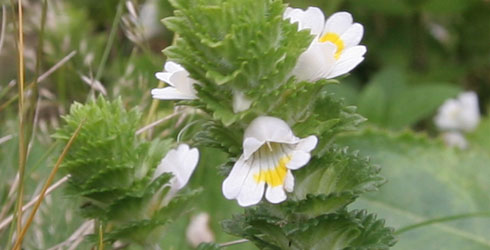
Euphrasia azorica.

Euphrasia azorica.
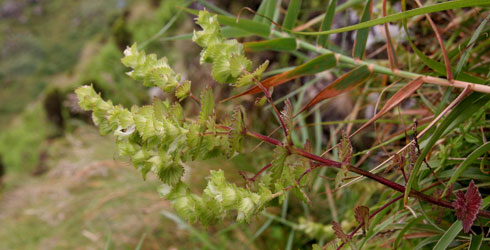
Euphrasia azorica.
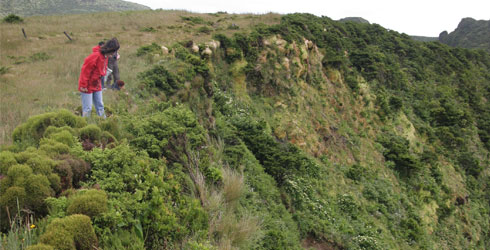
Typical Euphrasia azorica habitat - Caldeira Seca, Flores.

On Pico, Euphrasia grandiflora is now largely restricted to the steep sides of volcanic explosion craters.

Euphrasia grandiflora habitat.
About the authors

Dr Fred Rumsey
Botanist - Identification and Advisory Service, Angela Marmont Centre for UK Biodiversity.
Toolbox
Glossary
Calyx
Sepals of a flower.
Capitate
Forming a headlike mass or dense cluster.
Corolla
Petals of a flower.
Cuspidate
Having a short abrupt point.
Deltate
Triangular leaf shape
Galeate
Helmet shaped.
Hemiparasitic
A parasite with chlorophyll - it is not wholly dependant on its host for nutrition.
Inflorescence
Group or cluster of flowers arranged on a stem.
Obcordate
Heart shaped.
